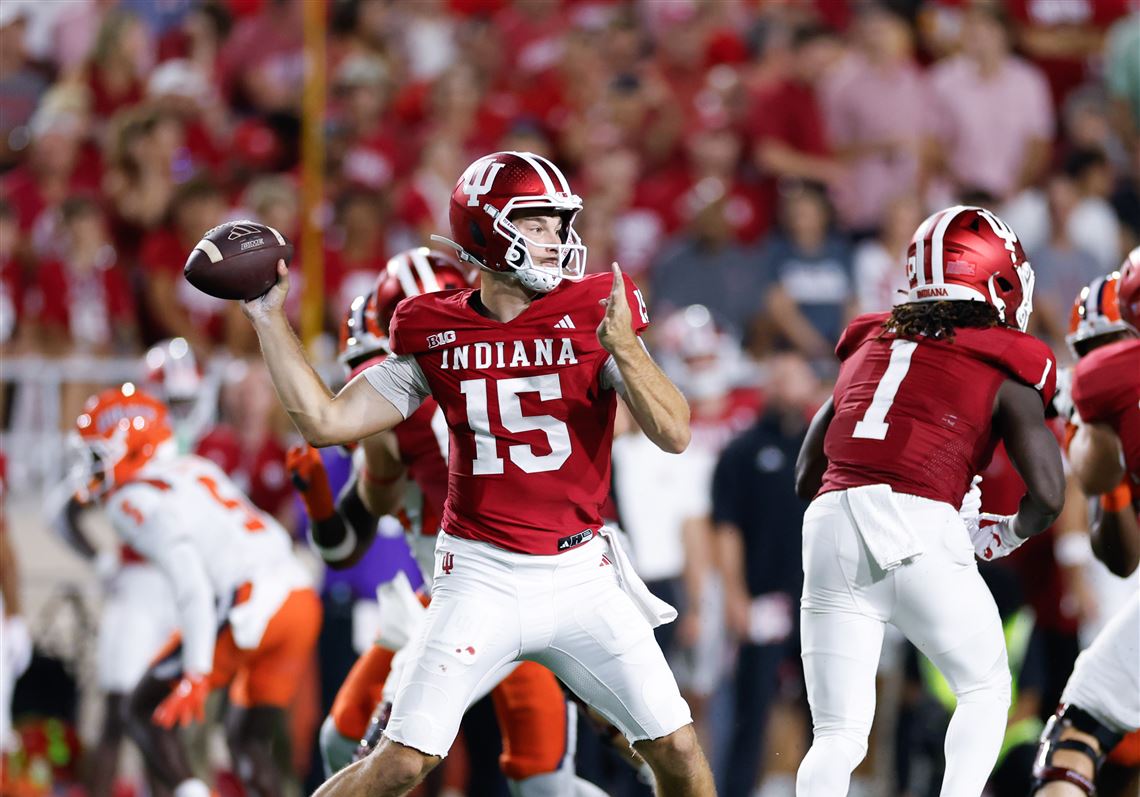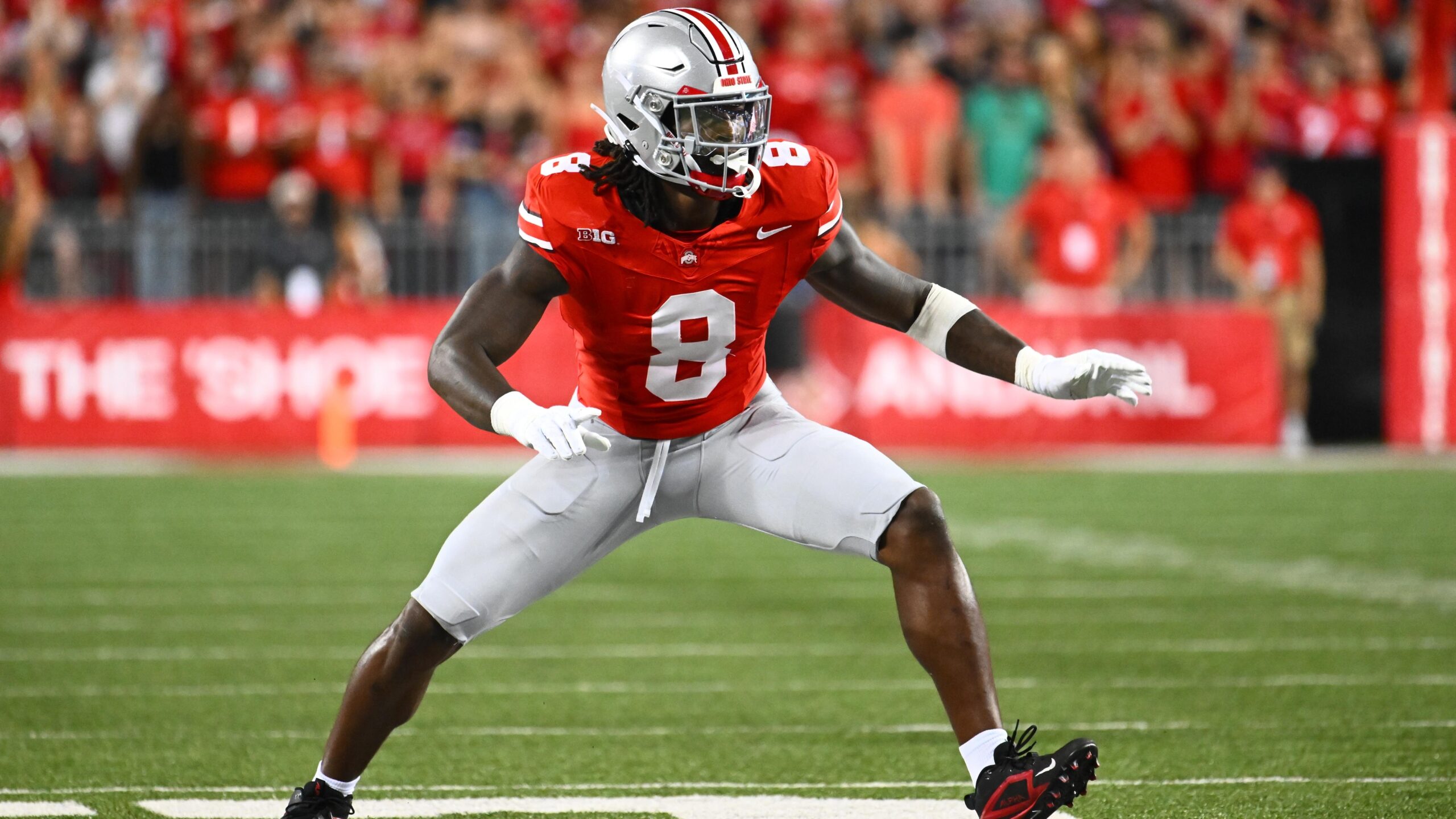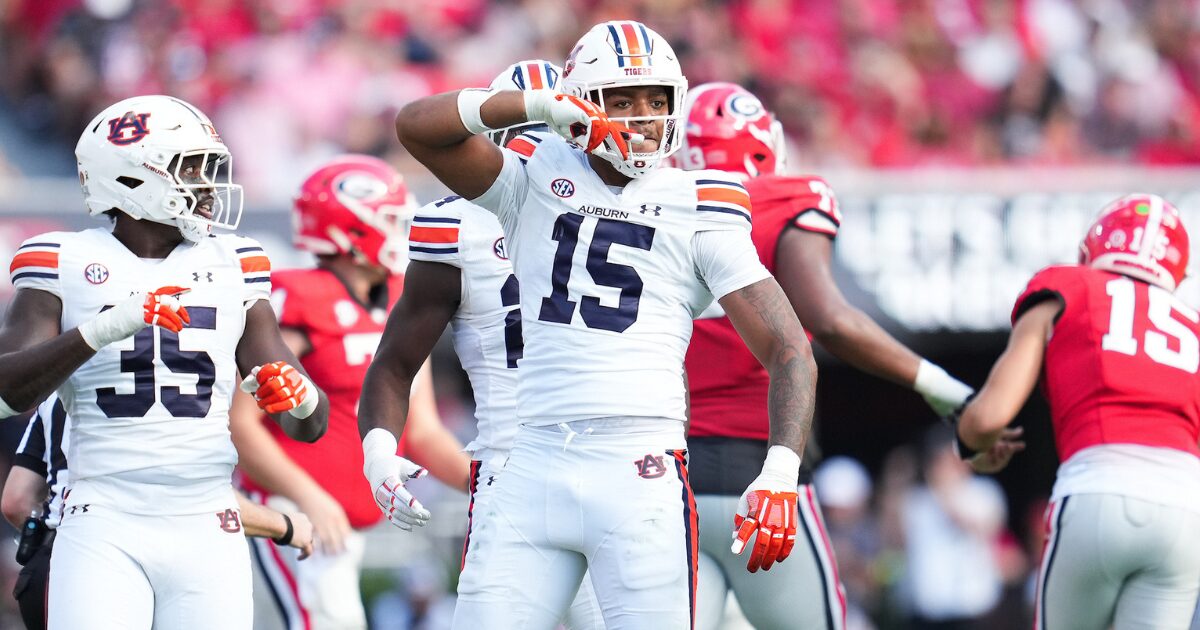By Charlie Campbell.
Send Charlie an e-mail here: [email protected]
Follow Charlie on Twitter @draftcampbell for updates.
This page was last updated April 12, 2015. Follow me @walterfootball for updates.
Position Review: Cornerbacks
Cornerback Class
Early-round talent: B+
Mid-round: B
Late-round: B-
Overall grade: B
2015 prospects vs 2014
Trae Waynes = Justin Gilbert
Kevin Johnson < Kyle Fuller
Jalen Collins < Darqueze Dennard
Byron Jones > Jason Verrett
Ronald Darby = Bradley Roby
Marcus Peters > Lamarcus Joyner
P.J. Williams > Stanley Jean-Baptiste
Ifo Ekpre-Olomu > Dexter McDougal
This year’s draft class features a solid group of cornerbacks, and this group is comparable to last year’s class. The 2015 class could match the 2014 NFL Draft’s total of five first-round picks, but it could also either surpass it or maybe fall short. This year’s group has five corners who are on the bubble of the first round.
If you were to mix the classes, Waynes and Gilbert are equal as prospects. Fuller and Dennard would be the next two prospects. Johnson, Collins and Jones are about equal to Verrett.
Darby would be be equal to Roby. As a player, Peters is similar to Waynes and Gilbert, but Peters’ off-the-field issues knock him down significantly. Williams also is hurt by off-the-field concerns, but as a player, he would go between Joyner and Jean-Baptiste. Ekpre-Olomu is better than McDougal. If Ekpre-Olomu hadn’t torn his ACL last December, he would have been the second-rated corner in the 2015 class.
Safest Pick: Trae Waynes, Michigan State

The 6-foot, 186-pound Waynes is a well-rounded player. He is fast, physical, long and athletic. Over the past two seasons, Waynes demonstrated the ability to play press-man, off-man, and zone coverage. He has ball skills to go along with being a quality tackler. Waynes is skilled at staying with receivers and preventing separation. He may not become an elite corner like a Patrick Peterson, but Waynes looks like a safe pick to turn into a very good starter.
Previous Picks:
2014: Justin Gilbert
2013: Dee Milliner
Biggest Bust Potential: P.J. Williams, Florida State

This could easily be Peters because of off-the-field issues, but if he stays out of trouble, he should be a good NFL corner. Williams has flaws on and off the field while also being projected to go in the first three rounds of the 2015 NFL Draft. Aside from his recent DUI arrest, some teams feel that Williams could be beaten for some long plays in the NFL. He is a big corner, but doesn’t always prevent separation. Taking on NFL receivers will be an even bigger challenge, and Williams could give up some big plays. Thus, he’s my pick for the biggest bust potential.
Previous Picks:
2014: Bradley Roby
2013: David Amerson
Cornerback Rankings by Attributes
Off-Man Coverage Ability:
NFL prototype: Darrelle Revis, Jets
- Ifo Ekpre-Olomu
- Ronald Darby
- Marcus Peters
- Trae Waynes
- Kevin Johnson
- Byron Jones
- Jalen Collins
- P.J. Williams
Recap: Going off the opinion of Jon Gruden, which is now a consensus thought around the league, the most important two positions on a defense are an elite pass-rusher off the edge and a shutdown cornerback. The NFL is driven by passing, and a shutdown corner can limit the opposition’s ability to score points by taking the best receiver away from a quarterback. Teams throughout the league are searching hard for that kind of cornerback talent. Playing off-man coverage is more challenging than press-man because off-man coverage requires loose hips and agility to turn quickly. NFL offenses use lots of bunch formations to force cornerbacks into off-man coverage whether want to play it or not.
Ekpre-Olomu is excellent in off-man coverage. He can flip his hips to run and is very smooth. Ekpre-Olomu runs the route of the receiver and doesn’t allow separation. This ability really sets him apart from the rest of the pack.
Darby and Peters are very fluid and do a great job of blanketing receivers. Darby is faster and more agile than Peters, thus Darby is rated ahead.
Waynes, Johnson and Jones are good in off-man coverage. All three enter the NFL with that being a strength. Waynes and Johnson are better at not allowing separation thus they’re ranked higher.
Williams played more press-man and zone as a junior. He’ll need some development in his off-man skills.
Collins is more of a press-man corner, but he has the athleticism to play off-man with more development.
Zone Corner:
NFL prototype: Charles Tillman, Bears
- Trae Waynes
- Byron Jones
- Kevin Johnson
- Marcus Peters
- Jalen Collins
- P.J. Williams
- Ronald Darby
- Ifo Ekpre-Olomu
Recap: Many teams mix man and zone coverage, so a corner who can excel in both is very valuable. The top three are virtually tied. The Spartans played more man coverage, but when they played zone, Waynes did well. In the NFL, his size, speed and tackling are great fits to play zone coverage against pro receivers.
Jones and Johnson are very good zone corners. Each uses his size to help cover receivers who run into his area. Both would fit well into NFL zone schemes. Jones has the explosiveness to close quickly and also is well built to make tackles.
Collins and Peters should be an asset in zone coverage as pros. They cover a lot of ground. Peters is ahead because he has better instincts. Teams that like big corners and want to vary their coverage will like them a lot.
Williams is a nice zone corner and would work well in a Tampa 2 system. That would be his best fit in the NFL and could help disguise some issues in preventing separation. Darby is reliable in zone coverage as well, but would fit better in a man scheme.
Ekpre-Olomu didn’t play much zone at Oregon as the Ducks consistently were putting him on an island in man. He’ll need some development if drafted by a zone team, but that could be considered to be a waste of his strengths.
Press-Man Coverage:
NFL prototype: Richard Sherman, Seahawks
- Trae Waynes
- Marcus Peters
- Jalen Collins
- Byron Jones
- Kevin Johnson
- P.J. Williams
- Ronald Darby
- Ifo Ekpre-Olomu
Recap: Many teams in the NFL feature defenses that play a lot of press-man coverage. Having the ability to jam and reroute receivers helps defenses throw off the timing of plays. Corners who can stay stride for stride with receivers down the field are very valuable. Almost this entire group of corners project well to playing press-man.
Waynes (6-0, 186) is the best press-man corner in the class. That is his wheelhouse as he is excellent at jamming receivers and riding them down the field. Uses the sideline well as an extra defender and stays in the hip pocket of receivers. The more Waynes is able to play press-man coverage, the better off he’s going to be as a rookie.
Peters (6-0, 197), Johnson (6-0, 188), Collins (6-1, 203) and Jones (6-1, 196) are all very good in press-man coverage. They have the size to be effective at jamming receivers and are able to turn and run. All four of them have technique that is ready for press-man in the NFL. Johnson could stand to add more weight and bulk to his frame, and that is why the others are ranked ahead of him.
Williams (6-0, 194) has the size, length and straight-line speed to play press-man coverage. He isn’t as consistent in his coverage as the players ranked above him though. Darby (5-11, 193) is put together well and could play press-man, but he isn’t as big or long as the other corners.
Ekpre-Olomu (5-9, 192) is too small to thrive as press-man corners. Big receivers will give the last three lots of problems so they shouldn’t be used in this manner.
Ball Skills:
NFL prototype: Aqib Talib, Broncos
- Marcus Peters
- Trae Waynes
- Ifo Ekpre-Olomu
- Byron Jones
- P.J. Williams
- Kevin Johnson
- Jalen Collins
- Ronald Darby
Recap: This wasn’t a tough choice for the top players as Peters and Waynes displayed consistent ball skills over the past two seasons. Peters and Waynes tied to top this group with three interceptions last year. Peters is aggressive and is always looking to take the ball the other direction. Along with intercepting passes, Peters is skilled at slapping the ball away for incompletions.
Waynes plays the ball extremely well and doesn’t panic when it comes his direction. He had three interceptions each of the past two years with a total of 15 passes batted away in that time. He has good ball skills, and I think he’s going to produce some nice interception totals in his NFL career.
Ekpre-Olomu displayed ball skills at Oregon, notching two interceptions with nine passes broken up in 2014. In the previous two seasons, he had three and four interceptions respectively, including 16 passes batted away during the 2012 season. Ekpre-Olomu showed some real acrobatic skills to make highlight-reel catches and contort himself to get in position to slap the ball away. The reason I have him third is the receivers are bigger in the NFL and I think that could diminish his ball skills to a degree.
Jones missed about a month of the season, but still managed to pick off two passes and slapped away four others. Williams had one interception and 10 passes broken up last year. He could improve his ball skills.
Johnson and Collins each had one interception while slapping away a number of other throws. Both could stand to get better at playing the ball and taking it away. Ball skills are the biggest thing lacking from Darby’s game. He had zero interceptions last year and only four passes broken up. He doesn’t play the ball well and must get better at attacking it.
Run Support:
NFL prototype: Richard Sherman, Seahawks
- Byron Jones
- P.J. Williams
- Trae Waynes
- Marcus Peters
- Ifo Ekpre-Olomu
- Kevin Johnson
- Ronald Darby
- Jalen Collins
Recap: Some college and NFL teams aren’t too concerned with how corners play the run, but good corner run-defenders can prevent big gains on the edge and make tackles to prevent long carries.
You might be surpassed that Jones is rated first considering he had the smallest tackle total of any defender from this group in 2014. However, Jones was injured for a good chunk of the season. There is no doubt that he is a strong tackler, and that could be seen in 2012 when he started at safety and made 88 tackles on the season. Jones also had 60 stops as a junior and 51 as a freshman. He has size, strength and explosion to be a tough run-defender on the perimeter.
Williams is very good in run defense. He chases backs down and doesn’t hesitate to fly into the tackle box. Williams led all of these cornerbacks with 68 tackles last season.
Not surprisingly, Waynes is close to the top as the Big Ten is a run-based conference. He is a tough, good tackler, racking up 50 tackles for two straight seasons. Peters is about equal and had 55 tackles in the last full season that he played.
Even though Ekpre-Olomu is undersized, he’s a gritty defender who had an impressive tackle total with 58 stops last year. Ekpre-Olomu isn’t afraid to stick his nose in the scrum and take on a back.
Johnson and Darby were average in run support. Collins isn’t much of a run-defender, but the LSU scheme didn’t require it.
Read-and-React:
NFL prototype: Patrick Peterson, Cardinals
- Ifo Ekpre-Olomu
- Trae Waynes
- Marcus Peters
- Byron Jones
- Ronald Darby
- P.J. Williams
- Kevin Johnson
- Jalen Collins
Recap: Corners need to be able to read the offense and quickly react to the run or pass. This is especially critical to getting off the field in third-and-manageable situations. It is hard to put these players in an order because Ekpre-Olomu, Waynes, Peters and Jones are all strong at read-and-react.
Ekpre-Olomu is the best read-and-react corner in this draft class. He can be source of big plays, but uses his skills to get in position to break up a lot of passes and disrupt running plays. Ekpre-Olomu lands the top spot because he’s shown the ability to read and react in more variable positions.
Waynes and Peters are strong as well and were skilled at reading the offense to get in position to make plays. Jones is intelligent and moves quickly to get in position to be around the ball.
Darby has good instincts and route recognition. He could stand to improve his ability to jump routes and create more interceptions.
None of the bottom three were bad when it came to read-and-react skills.
Instincts:
NFL prototype: Joe Haden, Browns
- Marcus Peters
- Trae Waynes
- Ifo Ekpre-Olomu
- Kevin Johnson
- Byron Jones
- Ronald Darby
- P.J. Williams
- Jalen Collins
Recap: For cornerbacks, instincts aren’t just about picking off passes. Instincts also are about intuiting the route and the quarterback. It starts before the snap when the offense lines up. Elite corners seem to have eyes in the back of their head to know when passes are coming behind them.
Peters is very instinctive and makes plays all over the field. He makes interceptions and gets in position to make tackles against the run. Waynes is similar, but Peters seemed a little more adept at knowing when to freelance.
Ekpre-Olomu displayed real instincts for Oregon over the past few seasons. He made big plays in both phases and seems always ready for whatever route is thrown his direction. Johnson is a smart corner as well and doesn’t get caught by surprise.
Jones has special instincts to be a weapon as a hybrid safety and slot corner. Darby is very good at reading receivers and quarterbacks to prevent separation.
Collins didn’t have that many starts at LSU, so he is still somewhat raw and needing development.
Recovery:
NFL prototype: Antonio Cromartie, Jets
- Trae Waynes
- Kevin Johnson
- Marcus Peters
- Ronald Darby
- Jalen Collins
- Byron Jones
- Ifo Ekpre-Olomu
- P.J. Williams
Recap: The majority of cornerbacks in the NFL are going to allow some separation against good route-runners, but the good corners have the ability to recover to close the space. It takes short-area burst, but having length also plays a significant factor.
In this draft class, Waynes, Johnson and Peters are excellent in recovery. They quickly close any separation, and that makes it hard to complete passes against them. An instant after the receiver is open, he’s covered again before the quarterback can complete the pass. Waynes’ recovery last season was phenomenal.
Darby was very skilled at recovery in his collegiate career. Jones and Ekpre-Olomu have solid, but not exemplary, recovery right now. Jones has length to help him recover, while Ekpre-Olomu uses his instincts and speed to help bail him out.
Williams doesn’t recover that well. When receivers get separation, he isn’t skilled at taking it back. Williams makes tackles, but he could beat for some plays by NFL receivers.
2026 NFL Mock Draft - Jan. 7
NFL Picks - Jan. 7
NFL Power Rankings - Jan. 5
Fantasy Football Rankings - Sept. 1



